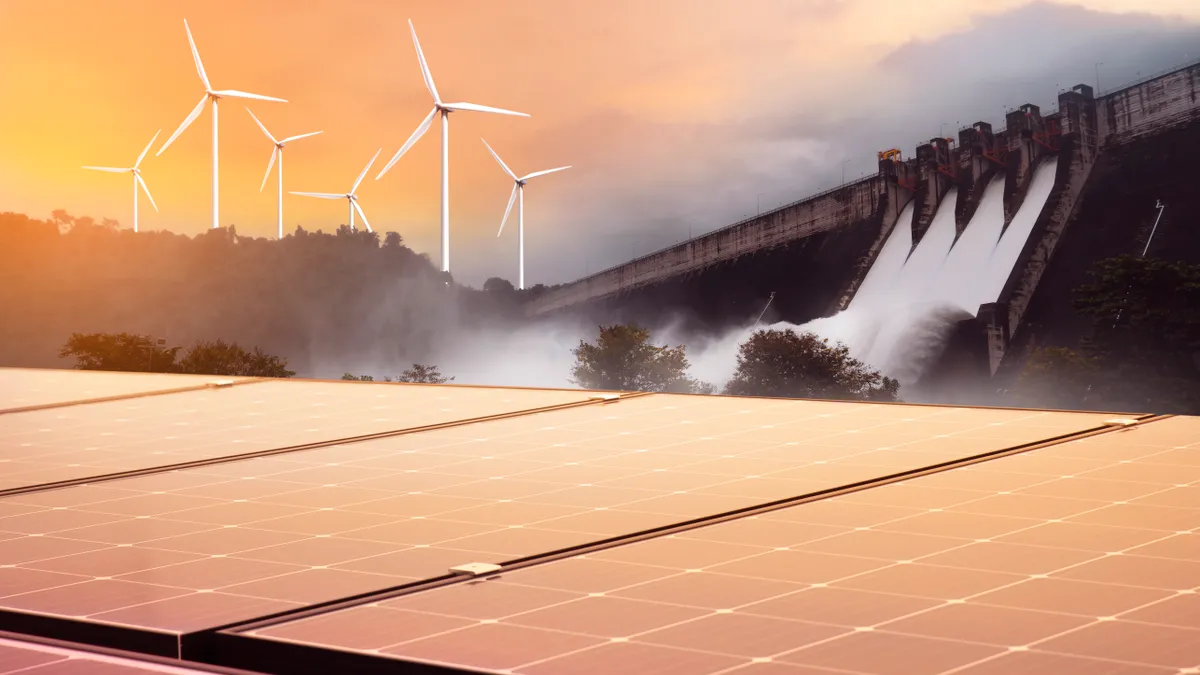Jigar Shah is the director of the Loan Programs Office at the U.S. Department of Energy.
The United States has a massive fleet of existing and legacy energy infrastructure. To meet the nation’s climate goals and support communities with energy-based economies, we must reinvest in that infrastructure and skilled workforce to build our clean energy future. Now, the federal government has up to $250 billion to do just that.
Through the Energy Infrastructure Reinvestment (EIR) category of the Title 17 Clean Energy Financing Program, the Department of Energy Loan Programs Office (LPO) can provide low-cost debt financing for large-scale energy infrastructure projects that retool, repower, repurpose or replace existing or legacy infrastructure, or that help operating energy infrastructure prepare for a cleaner future by making new investments to avoid, reduce, utilize or sequester air pollutants, including greenhouse gas emissions.
EIR is as vast as utilities’ needs and domains and includes financing for investments in operating systems as well as retired assets. The program is technology-agnostic, meaning LPO can finance entire Integrated Resource Plans as long as they relate to existing or legacy infrastructure.
Potential projects are wide-ranging. They may include replacing retired infrastructure with nuclear energy or renewables with or without storage, leveraging existing interconnections, repurposing pipelines, retrofitting power plants, reconductoring transmission lines, repowering legacy nuclear or hydro plants, and more. The program may also finance environmental remediation at brownfield sites to accompany site redevelopment.
Here are just a few examples of projects that could be eligible for EIR financing.
- Fossil replacement with solar and storage: An independent power producer owns the site of a 300-MW coal-fired power plant that has ceased operations. The plant has been demolished, but the interconnection and road infrastructure remain. The company plans to reuse the site and repurpose the existing interconnection to build 30 MW of solar and 250 MW of 4-hour battery storage. The project is eligible for, and the company is exploring, relevant federal Investment Tax Credits. The company has developed a plan to retrain and provide new employment opportunities for plant employees. The company is seeking a loan guaranteed by LPO to support construction of the solar and storage, which will be repaid through a combination of tax credits and revenue from the new solar-plus-storage facility. A portion of the loan will also be used to finance the remediation of several on-site coal ash ponds.
- Transition to nuclear: A utility plans to install a small modular reactor on the site of a retired coal-fired power plant. The SMR’s 300-MW electric generation capacity is similar to that of the retired coal plant, therefore making it well-suited for reusing the existing grid interconnection. Several balance-of-plant systems, such as the plant makeup water and water storage systems, cooling towers, and chemical stores from the coal plant can be repurposed for use with an SMR. The SMR has the potential to benefit from the existing pool of skilled workers able to transition from their prior employment at the coal plant. Further cost savings include avoiding land acquisition costs for the SMR, utilizing rail and road infrastructure, and having an existing water source. The SMR design has been certified by the U.S. Nuclear Regulatory Commission, and the utility’s plans have received state regulatory approval. The utility is seeking a loan guaranteed by LPO to finance the construction of the SMR, with repayment assured through a long-term power purchase agreement and the regulatory approval for cost recovery via customer rate base.
- Power plant replacement with an energy-related industrial facility: A private developer has purchased the site of a retired gas-fired power plant and plans to repurpose the site through the construction of several large, clean energy manufacturing facilities. The developer has identified the existing electrical, pipeline, rail and road infrastructure as attractive assets that will accelerate and simplify site conversion. The manufacturing facilities will create numerous construction and permanent jobs. The developer is working closely with the local community and labor organizations.
- Transmission reconductoring: A utility plans to upgrade several high-voltage transmission lines through reconductoring. The utility estimates that replacing the conductive core of older transmission lines will double the electricity carrying capacity compared to the existing conductors, while reducing line losses by up to 50%. The reconductoring plan will retool the existing towers and utilize established rights-of-way. This investment will significantly increase the utility’s ability to interconnect new clean energy generation without requiring the time and expense associated with the permitting and construction of new transmission lines. The reconductoring plan has received regulatory approval for cost recovery, which LPO considers sufficient to ensure reasonable prospect of repayment on the loan.
LPO looks forward discussing whether our low-cost debt can support your organization’s reinvestment in energy infrastructure. We’ll need to begin these conversations soon. Conditional commitments (agreed upon term sheets with stipulations the borrower must meet before financial close) must be made by Sept. 30, 2026, for loan disbursements available through Sept. 30, 2031.
If you’d like to learn more about how LPO can support some or all of your IRP, please request a pre-application consultation to get connected with a member of our team.














